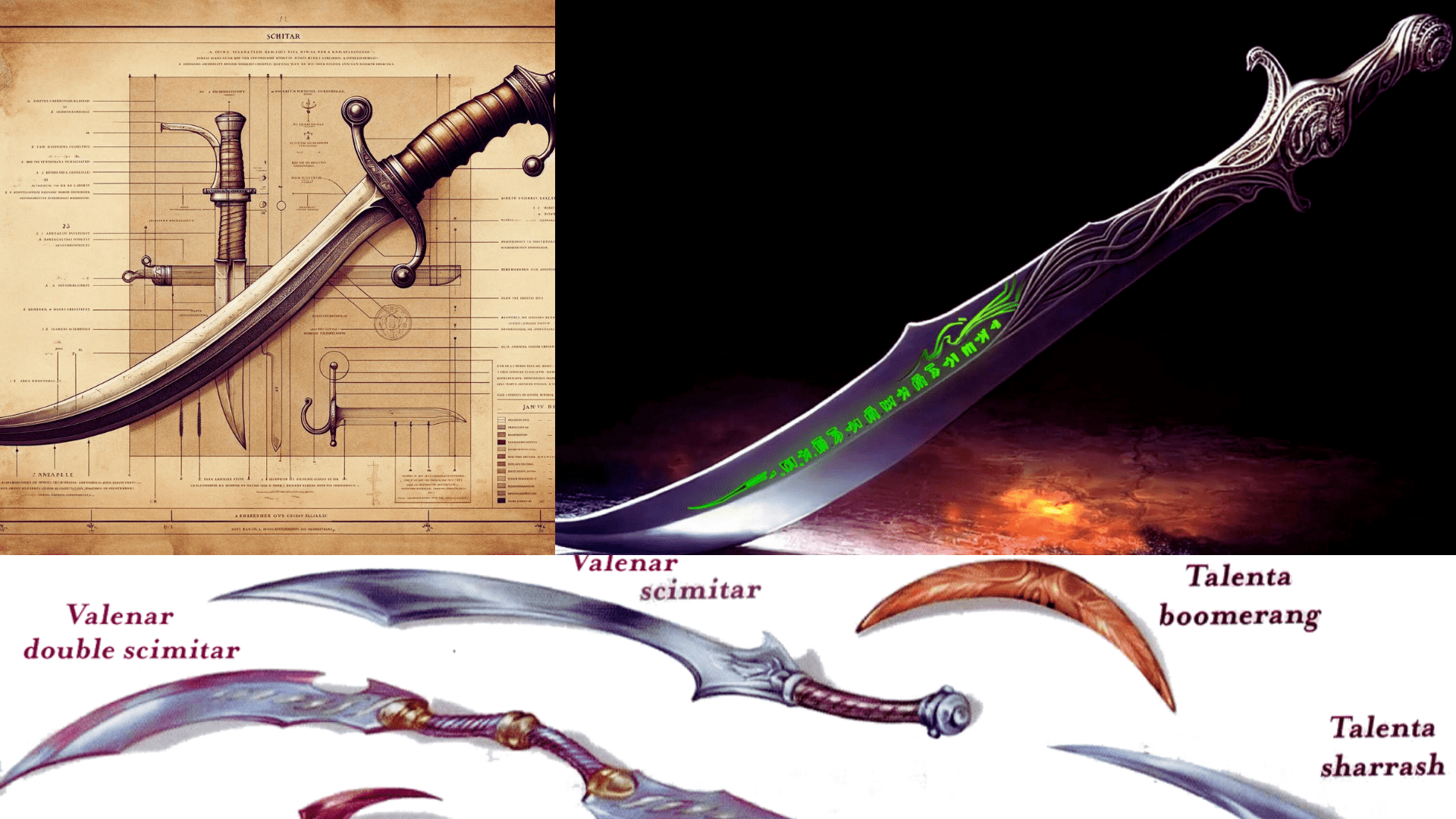The scimitar is a type of curved sword that has its origins in the Middle East, gaining popularity during the Islamic conquests. Characterized by its distinctive, deeply curved blade, it was primarily designed for slashing, making it a favored weapon among cavalry due to its ability to deliver powerful and swift cuts while on horseback. The design of the scimitar includes a sharp, curved blade that typically broadens towards the point, enhancing its slicing capability. Historically, the scimitar has been a symbol of power and military prowess, often associated with the depiction of Eastern warriors in both literature and art. In cultural contexts, it also holds significant symbolic meanings, representing justice, authority, and protection in the Islamic world, reflecting its spiritual and moral significance beyond its use in warfare.
Historical Origins
Early Uses of Scimitars
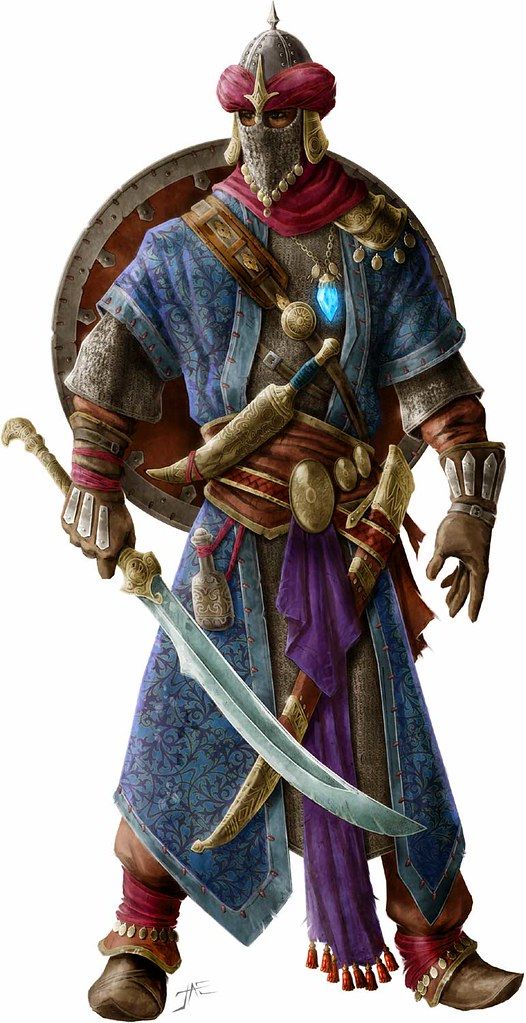
The Scimitar, known for its distinctively curved blade, has a storied history stretching back to ancient civilizations. The earliest mentions of scimitar-like weapons date back to the 7th century among the Turko-Mongol nomads of Central Asia. It’s believed that the curved design of the scimitar was introduced into the central Islamic lands by Turkic peoples in the 9th century. Additionally, some theories suggest that the scimitar could have evolved from earlier weapons like the khopesh, a hybrid weapon of sickle and sword used in Ancient Egypt around 1600 BCE. This lineage indicates a deep-rooted cultural and functional significance, evolving to meet the needs of horseback warfare and close combat scenarios typical of the regions and eras in which it was popular.
Geographical Spread
The scimitar is a type of curved sword traditionally associated with Middle Eastern, South Asian, and North African cultures. Its distinct shape and design have roots in the Middle East and were particularly popular among various cultures such as Arabs, Persians, and Turks. The scimitar’s use and significance extended through various historical periods and regions, including during the Mongolian invasions of the thirteenth and fourteenth centuries, which influenced its adoption and adaptation by the Ottoman Turks. This widespread adoption underscores its iconic status across a broad geographical area, illustrating its historical and cultural importance in warfare and symbolism.
Design and Features of a Scimitar
Blade Characteristics

The scimitar is characterized by its distinctive curved blade, which is single-edged and has a convex curve along most of its length. This unique shape is designed for swift, slashing attacks and is more than just an aesthetic feature; it also enhances the weapon’s effectiveness and durability. The scimitar’s characteristics, such as the steepness of the curve, the thickness of the blade, its weight, and overall length, can vary significantly based on the specific cultural context and historical period. These variations influenced its handling and the tactical applications in combat. Furthermore, some scimitars featured blades that were deeply arched, which is a testament to the diversity in design within this category of swords.
Handle and Hilt
The design and features of the handle and hilt of a scimitar vary significantly to accommodate different styles and functionalities. Common materials used for the handle include polished wood and Damascus steel, often embellished with brass accents to enhance the grip and aesthetic appeal. The shape of the hilt can also vary, with some designs featuring an etched or intricately designed hilt to provide a distinctive look as well as a functional advantage in handling. Additionally, the inclusion and design of the handguard can differ, some may have more elaborate guards to protect the hand during combat.
Scimitars in Combat
Tactical Advantages
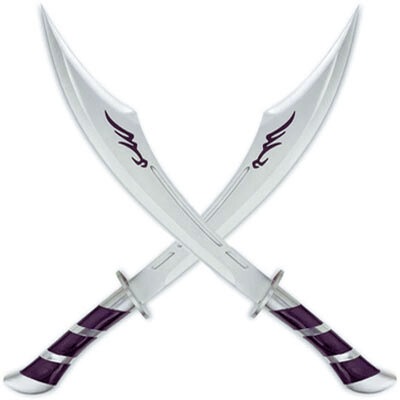
The Scimitar, with its unique curved design, offers several tactical advantages in combat:
- Enhanced Cutting Power: The curve of the scimitar increases the length of the cutting edge, allowing for more effective slashing attacks compared to straight swords. This curvature helps deliver powerful cuts with less effort.
- Compact Design for Close Quarters: The shorter and curved design of the scimitar makes it particularly suited for tight spaces, such as aboard ships or in crowded battlefields, where longer, straighter swords would be cumbersome.
- Ideal for Mounted Warfare: The scimitar’s design is highly advantageous for mounted combat. Its curve allows for easier and more effective strikes from horseback without the need for precise thrusts, making it an ideal weapon for fast-paced cavalry attacks.
- Historical and Cultural Significance: The scimitar carries a strong symbolic power and historical significance, particularly in Middle Eastern, South Asian, and North African cultures, which can enhance the psychological impact in combat situations.
Famous Battles Involving Scimitars
Scimitars have played significant roles in various historical contexts, particularly in the Middle East, North Africa, and during the Ottoman period. However, specific famous battles where scimitars were predominantly used. Generally, scimitars would have been employed in many of the battles involving Ottoman, Mameluke, and other Middle Eastern warriors throughout the centuries. Notable examples might include conflicts during the Crusades, battles of the Ottoman wars in Europe, and other regional conflicts where cavalry and close combat were prevalent.
Cultural Significance
Scimitars in Literature and Art
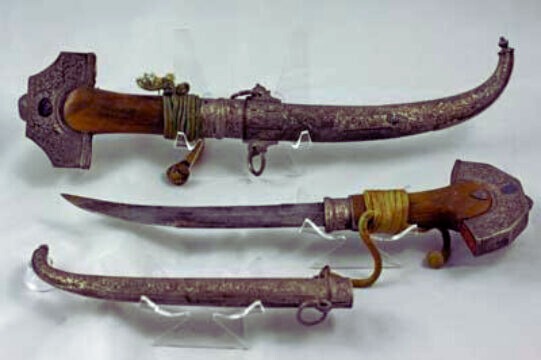
The scimitar has been a potent symbol in both literature and art, frequently associated with power, precision, and exoticism. In literature, scimitars appear in tales and historical narratives connected to the Islamic conquests and are often depicted as symbols of heroism and martial prowess. Their curved shape and distinctive design also make them popular in visual representations, symbolizing courage and strength in many Eastern cultures.
In art, the scimitar is featured extensively within traditional Islamic art, representing both a literal and metaphorical tool of power. It is also portrayed in various forms of cultural expression including dance and ceremonial traditions, indicating its deep cultural significance beyond just a weapon of war.
The scimitar’s iconic status extends into Western representations of the “Orient,” where it often symbolizes the mysterious and exotic nature of Eastern lands, as seen in various theatrical or literary settings such as Shakespeare’s works, where these swords are used as metaphoric and metonymic props.
Modern Use and Collectibility
Collecting Scimitars

Collecting scimitars in different video games involves various strategies. For instance:
- In Old School RuneScape, you can collect black scimitars from Ardougne Castle by picking the lock on the southernmost door, grabbing the scimitar, and then switching worlds to repeat the process.
- In Assassin’s Creed Brotherhood, obtaining the Scimitar involves completing the Armor/Weapon Shop quest to access the Spada Lunga, a heavy weapon with a special attack.
- In Zelda: Tears of the Kingdom, the Gerudo Scimitar can be obtained by starting the quest “Riju of the Gerudo” and sneaking into the Gerudo Shelter.
These methods provide engaging ways to enhance gameplay by adding special items like scimitars to your collection.
Practical Uses Today
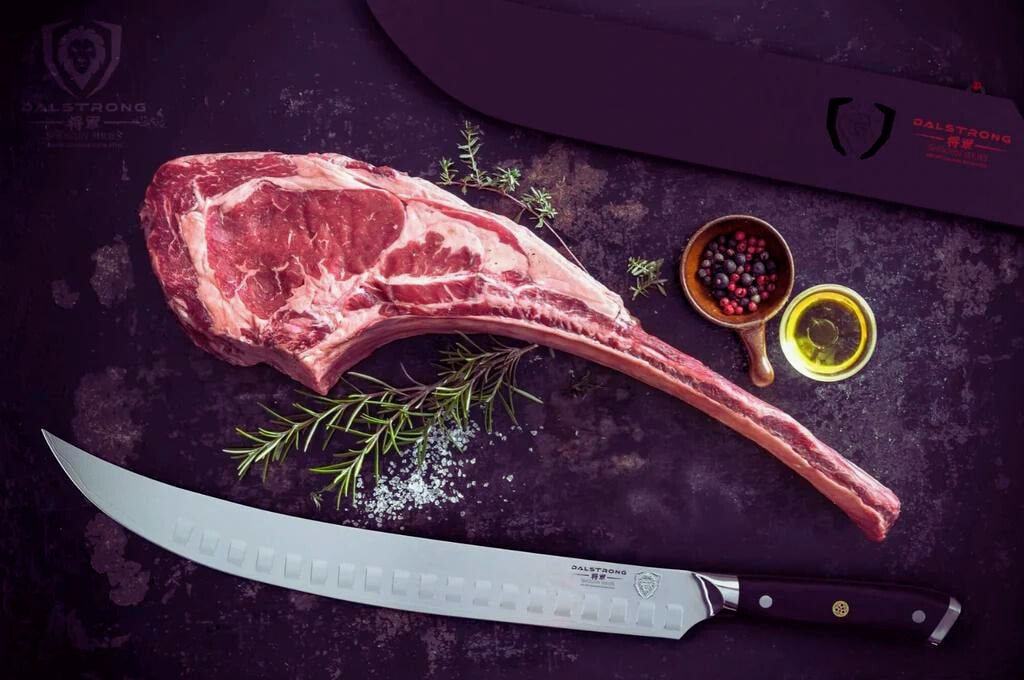
Today, the scimitar is not commonly used as a weapon but has seen adaptations in other practical areas:
- Culinary Tools: The scimitar knife, a derivative of the historical blade, is used in modern butcheries and kitchens to break down large pieces of meat into smaller, retail-ready cuts.
- Cultural and Ceremonial Uses: In regions where the scimitar has historical significance, such as the Middle East, South Asia, and North Africa, scimitars may be used in ceremonial contexts to honor traditions.
- Collectibles and Decor: Scimitars are often collected by enthusiasts of edged weapons and may also serve as decorative pieces, reflecting their aesthetic appeal and historical importance.
While not prevalent in modern warfare, the scimitar’s influence persists in these specialized areas, maintaining its legacy as a symbol of heritage and craftsmanship.
How to Identify a Genuine Scimitar
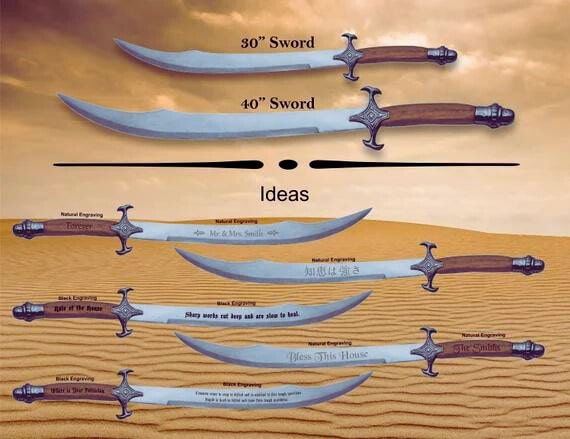
To identify a genuine scimitar without causing damage to the sword, consider the following steps:
- Examine the Build Quality: Genuine scimitars often exhibit high-quality craftsmanship. Look for uniformity in the curvature of the blade and attention to detail in the handle and hilt construction. Avoid items with disproportionate components like an overly long handle or excessively thick guard.
- Study Historical Characteristics: Familiarize yourself with the traditional attributes of scimitars from historical and cultural contexts. This knowledge helps compare suspected pieces against authentic examples, particularly in terms of form, proportions, and assembly style.
- Check Seller’s Reputation: Assess the credibility of the seller. Look for a history of positive feedback, especially concerning similar items. Verify whether the seller has a favorable rating from recognized bodies like the Better Business Bureau.
- Handle Multiple Examples: If possible, handle various authentic scimitars to get a feel for their weight, balance, and craftsmanship. The more genuine examples you handle, the easier it becomes to identify authentic characteristics.
By combining these methods, you can more confidently assess whether a scimitar is genuine or not.
Conclusion
From the dusty plains of ancient battlefields to the revered halls of modern collectors, the scimitar remains a symbol of the fusion between beauty and function. Whether you’re a history buff, a collector, or simply curious, the scimitar’s story is as captivating as its form.
Read also: What is a Bowline?
FAQs
Q. What is the difference between a scimitar and a saber?
While both are curved, the scimitar typically has a more pronounced curve and is lighter than a saber, which is often associated with European cavalry.
Q. Can you still find scimitars being made today?
Yes, some artisans and manufacturers continue to produce scimitars, mostly for decorative or ceremonial purposes.
Q. Are scimitars legal to own?
Ownership laws vary by country and region, so it’s important to check local regulations regarding bladed weapons.
Q. What are some popular cultural references to scimitars?
Scimitars appear in various movies and books, often in tales involving pirates, knights, and adventurers.
Q. How should one care for an antique scimitar?
Regular maintenance, including gentle cleaning and oiling of the blade, is essential to preserve an antique scimitar’s condition.
